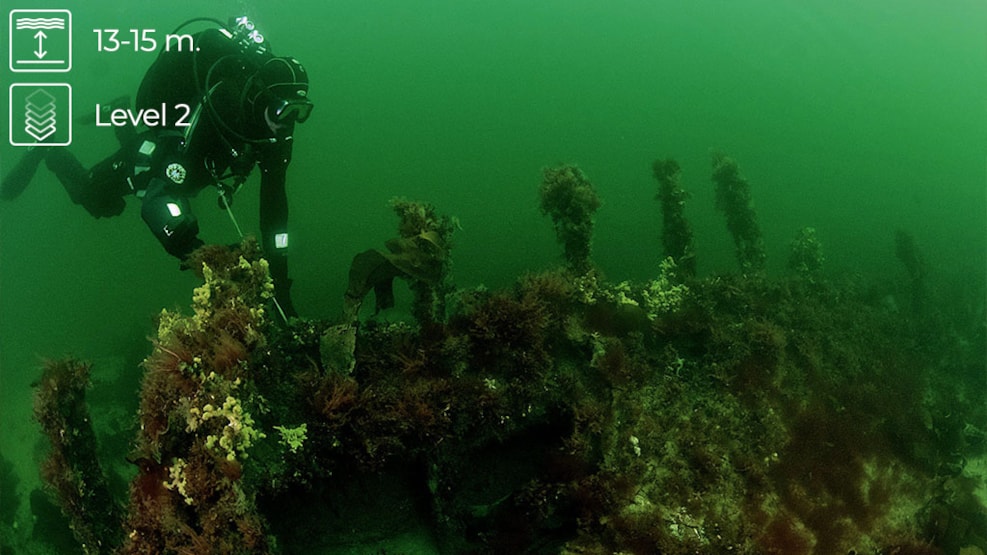
Wreck dive: The Augustenborg Wreck - The southern part of the Langeland Belt
The Augustenborg is a German trawler that was lost during the First World War after hitting a mine. The wreck is very broken up and is often referred to as a gunboat.
Wreck Type
Steamer or trawler
Length: circa 25m
Width: circa 6m
Depth: 13 to 15m.
Highlights
Around the wreck and the interior mid-ship.
Safety
You must always fly the A-flag when diving, a boat handler should remain on board when divers are in the water.
Visibility: Normally good
Currents: From 0 - 3 knots
About The Augustenborg
This wreck is very broken up, presumably having undergone salvage. The wreck has an east - west orientation and lies at a moderate depth, so both new-beginner and experienced divers can enjoy an exciting dive here. The wreck is also close to shore, away from the shipping lanes.
When you get down to the wreck you will see the frame and sides of the ships rising out of the seabed up towards the light. You will get the most out of your dive by swimming right around the wreck before investigating the more jumbled part of the wreck amidships. Here you will find various parts of the wreck sticking up from the seabed, but it is difficult to make heads and tails of things. The most intact feature of the ship are it’s two sides.
The currents and the sand can both bring to light and then cover up different parts of the wreck amidships. It is one of the oldest wrecks that is dived-on in the Langelands Belt. Some interesting detail can be seen in the timbers found here, which helps you to get an insight into how ships were built in the past.
Because of the relatively shallow depth the wreck is covered by a more attractive growth of both brown and red algae than is seen on deeper lying wrecks. There are also large colonies of breadcrumb sponges, which help make a visit to this wreck a very colorful experience.
Good light, and infrequent strong currents, help to give long bottom times which allow you to study the marine life in detail. Different species of fish find shelter in the wreck, large cod of up to 10kg can often be seen around, on and under the wreck. During the winter lumpsuckers are often seen here as they can find many places in the wreck to lay their eggs. Despite the broken up nature of the wreck, this site offers good diving all year round.
| (lat) | 54.729233 | N54°43.754' |
| (long) | 10.746900 | E10°44.814' |
| ddd.ddddd° | hddd°mm.mmm' |